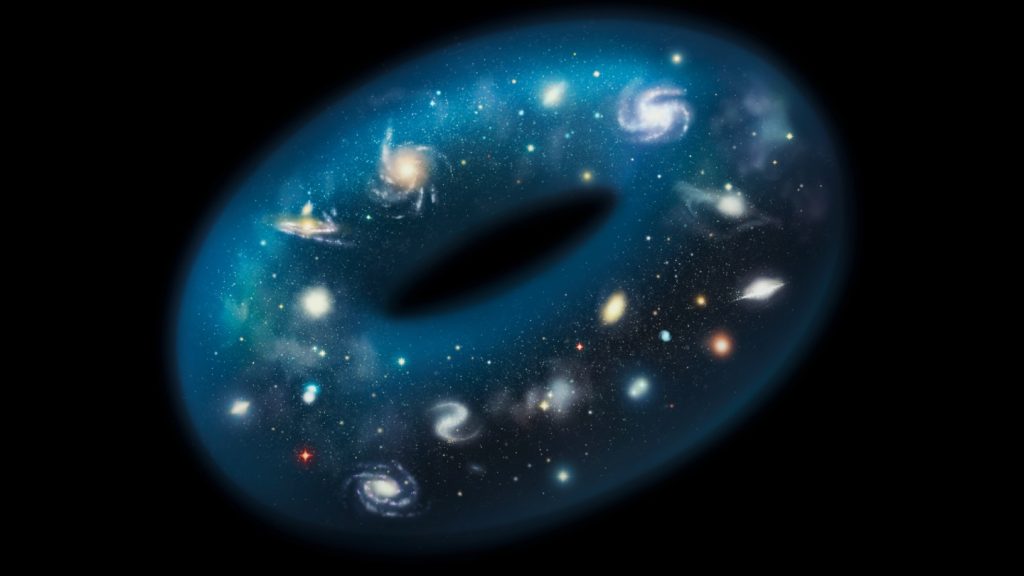The cosmos may have a complex topology similar to that of a doughnut, where one could travel across the universe and end up back at the starting point, as explained by physicists in a recent study. The doughnut’s complex topology contrasts with the simple shape of a sphere or cube where any closed path can be shrunk down to a point. The hole in a doughnut restricts this shrinking ability, making it a nontrivial topology.
Previous studies have searched for signs of complex topology in the cosmic microwave background, light from the early universe. While no evidence for such a topology was found, researchers argue that there is still a possibility that the universe has nontrivial topology awaiting discovery. The subset of possible topologies that have been explored only scratches the surface, leaving room for more exotic shapes like a 3-torus, a cube that loops back on itself, to be considered.
The recent study examined a total of 17 potential nontrivial topologies that could be present in the universe. Most of these complex shapes have not been ruled out yet and could potentially manifest in the cosmic microwave background. Detecting these unusual topologies would be challenging and may require advanced computational techniques like machine learning to analyze large datasets of cosmic background radiation.
The motivation behind the search for nontrivial topology lies in the unique features of the cosmic microwave background that suggest asymmetry in the universe. Exploring these asymmetric patterns could provide insights into the underlying structure of the cosmos and potentially solve one of the most intriguing mysteries in modern cosmology. Future studies will continue to investigate the possibility of complex topology in the universe using data from surveys of galaxies and space telescopes like Euclid.
The analogy between the universe and a doughnut offers a new perspective on how we perceive the cosmos and opens up a realm of possibilities for understanding its intricate geometry. By delving into the unexplored territories of complex topologies, scientists aim to unravel the mysteries of the universe and uncover hidden patterns that may reshape our current understanding of the cosmos. The quest for nontrivial topology promises to be an exciting journey into the unknown realms of science and cosmology, providing clues to the fundamental nature of the universe itself.


